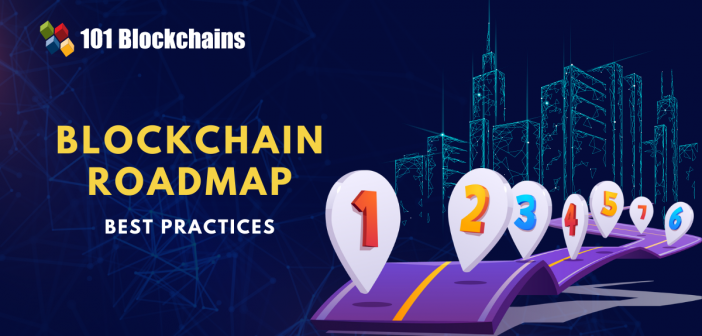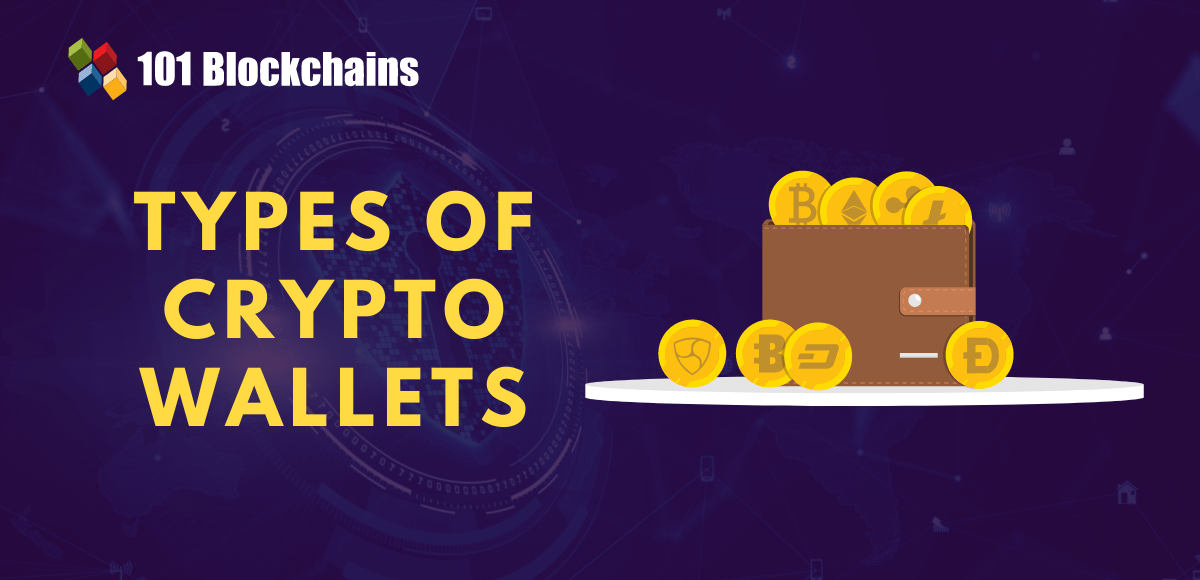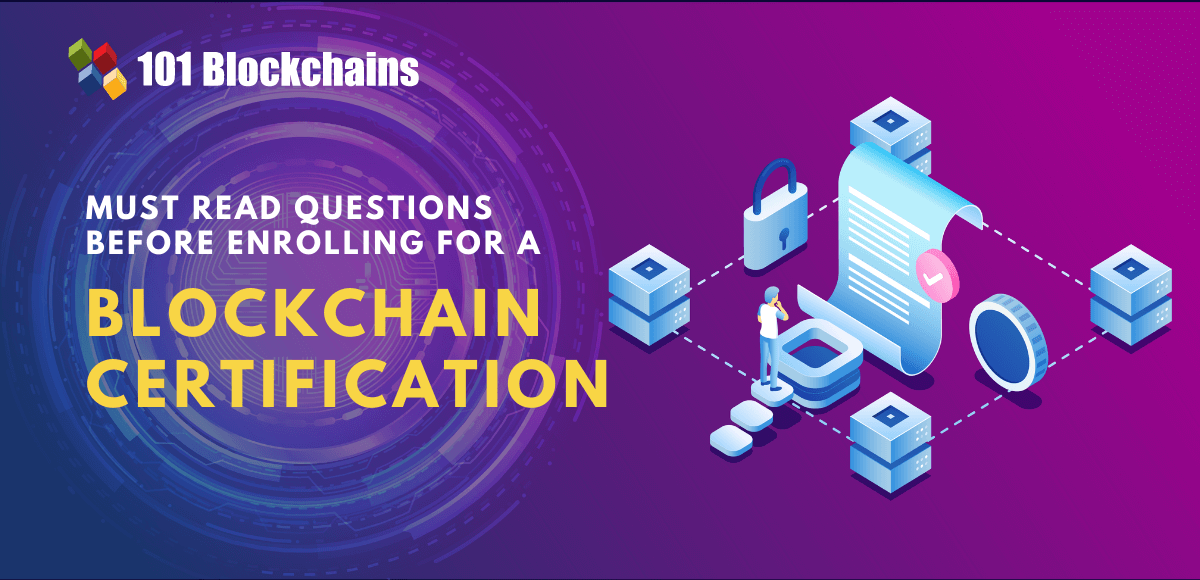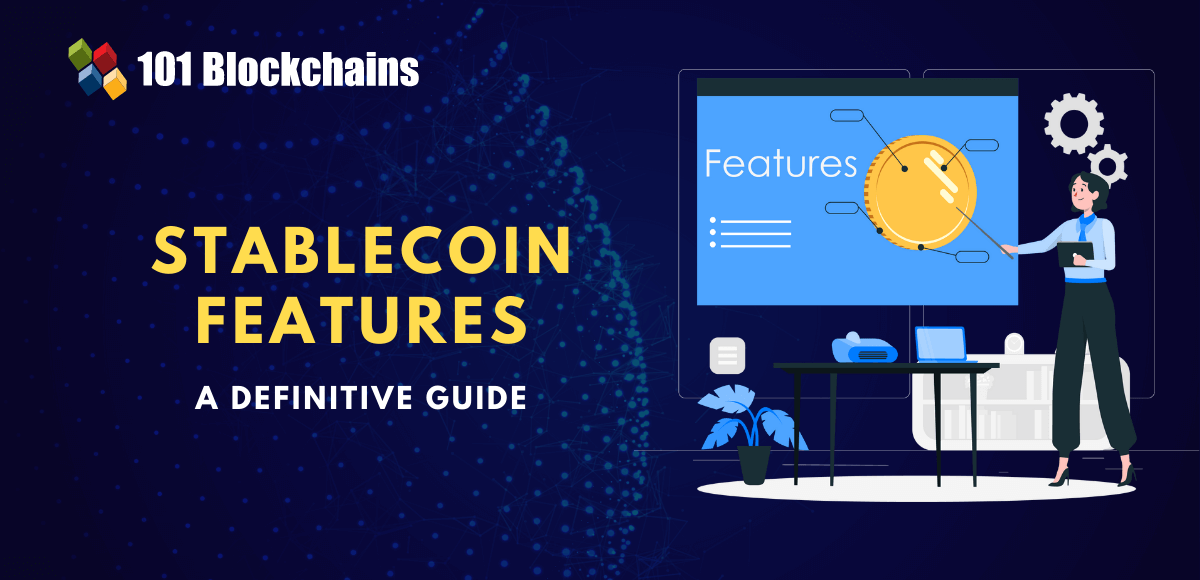Many technologies have emerged in the past decade, with none having the capability to outshine blockchain in terms of popularity. The unreal hype around blockchain technology has slowly started to find a shape as it presents the capability for transforming the approaches to conduct any type of transaction. Blockchain basically makes existing transaction processes efficient and probably very effective as compared to previous versions.
Therefore, enterprises are eager to learn about blockchain roadmap best practices to implement successful blockchain projects. Blockchain is still a mysterious phenomenon for many business leaders all over the world, despite the massive body of literature associated with it. So, it is essential to learn about blockchain as a technology ecosystem rather than considering it as another new technology product. Let us find out the suitable roadmap to blockchain project implementation in the following discussion.
Build your identity as a certified blockchain expert with 101 Blockchains’ Blockchain Certifications designed to provide enhanced career prospects.
Blockchain and Its Implications for Modern Businesses
The technology landscape is constantly evolving, thereby imposing the need for a blockchain technology roadmap for appropriate direction. Many big companies are exploring new business opportunities with the scope for disruption, although with a focus on efficiency gains only. Therefore, one of the foremost factors that you should take into account before planning a blockchain technology roadmap is the value of blockchain.
At the same time, the mainstream adoption of blockchain would become quite evident by 2023. Big multinational corporations and digital tech giants want to get their hands on significant portions of market shares with blockchain roadmap strategy.
So, what is the role of blockchain exactly in the operations of a modern business? The most obvious answer points out the facility for participants on blockchain to engage directly in transactions. In the blockchain model, you don’t have to worry about any broker, lawyer, government agency, or bank for carrying out a transaction.
Basically, blockchain helps in verifying participant identity alongside validating the transactions. Blockchain roadmap best practices enable businesses to ensure that all network participants are capable of playing according to specified roles. Furthermore, one could also notice the wide range of assets that you can exchange on the blockchain alongside the opportunities for better accessibility for all participants.
Interestingly, your blockchain roadmap strategy can also include machines, thereby opening up a wide array of commercial possibilities. For instance, integration of technologies like IoT and AI upon maturity of the technology would lead to autonomous agents serving on behalf of a participant for negotiating transactions directly with multiple stakeholders by leveraging data from sensors.
Curious to learn about blockchain implementation and strategy for managing your blockchain projects? Enroll Now in Blockchain Technology – Implementation And Strategy Course!
Value of Blockchain Projects for Businesses
The roadmap to initiate a blockchain project must start with a clear impression of the value advantages you can avail. Any true blockchain solution would feature five distinct elements such as distribution, decentralization, encryption, tokenization, and immutability.
-
Distribution
True blockchain solutions exhibit a distributed nature, and participants in the blockchain network could be scattered all over the world while connected to the network. Every participant responsible for operations of a full node takes over the maintenance of a complete copy of a ledger for updating with new transactions as they happen.
-
Decentralization
Another blockchain trait that influences blockchain roadmap best practices is decentralization. The nodes on the distributed network in a blockchain employ a specific consensus mechanism for maintaining network information as well as the rules for the operation of the network. The decentralization element is necessary for ensuring that any particular entity cannot control all the systems or information or define the rules of transactions on the network.
Are you preparing for a Blockchain interview? Check out this set of 50 most common Blockchain interview questions to prepare well and crack the interview.
-
Encryption
One of the most favorable traits for which enterprises look for a roadmap to initiate a blockchain project is encryption. Blockchain leverages technologies like public and private keys for secure documentation and storage of data in blocks with semi-anonymity. Participants on blockchain have control over their identity as well as other personal information while sharing only the information needed in a transaction.
-
Tokenization
Blockchain transactions and other exchanges are associated with secure value exchange, and the value is represented as tokens. The tokens could serve as representatives for financial assets as well as physical assets. Tokens can also help participants in controlling personal data, thereby serving as a prominent aspect in blockchain business use cases.
-
Immutability
The most dominant aspect for enterprises in blockchain roadmap best practices would subsequently point towards immutability. Cryptographic signing, time-stamping and sequential addition of blocks to the ledger ensures limited scope for modification in records without the knowledge of other participants.
With so much value to contribute to enterprises, it is important for businesses to think of an ideal blockchain implementation roadmap. The maturity of blockchain technology has resulted in a profoundly increasing interest of business leaders in blockchain. So, where should you start with blockchain implementation?

Are You Prepared?
First of all, it is important for enterprises to understand the specific outcomes perceived as an outcome of implementing the blockchain technology project. It is important to understand that you might encounter some changes along the way to introduce changes in desired outcomes. So, you need to start with a clear impression of the need for blockchain for your business use case.
Subsequently, it is important to focus on one of the basic tenets in blockchain roadmap best practices before starting. A clear impression of your readiness for participating in the blockchain landscape can help you find the perfect start. The three important factors that establish your readiness for the blockchain landscape include skills, risk tolerance, and collaboration.
-
Skill Requirements
It is important to note that you would need new skills for working with network foundations, data administration, change management, governance, security and privacy, application integration, and maintenance. In addition, the new business skills aimed at decentralization of authority in enterprises for blockchain alliances and networks are also significant.
-
Risk Tolerance
Partnership is a basic given in blockchain solutions. However, blockchain roadmap best practices indicate the need to focus on the potential loss of control in specific aspects of the business. So, it is important to prepare for possible detours along the way for meeting the relevant need of resources. As a result, it can help in compensating for interim costs or unprecedented outcomes in blockchain projects.
-
Collaboration
Collaboration is the next important factor that you need in a blockchain roadmap strategy. Blockchain technology brings organizations to a broader ecosystem without having any central authority. The new collaborations depend on shared, valid data obtained from all network participants.
After establishing a clear impression of all the essentials for setting up your blockchain project, you need to plan roadmaps. The blockchain roadmap provides a clear outline of the milestones to cover for the concerned blockchain projects. So, here is an outline of the different steps in a blockchain project roadmap for setting up your own business blockchain.
Some of the Common Blockchain Roadmap Best Practices
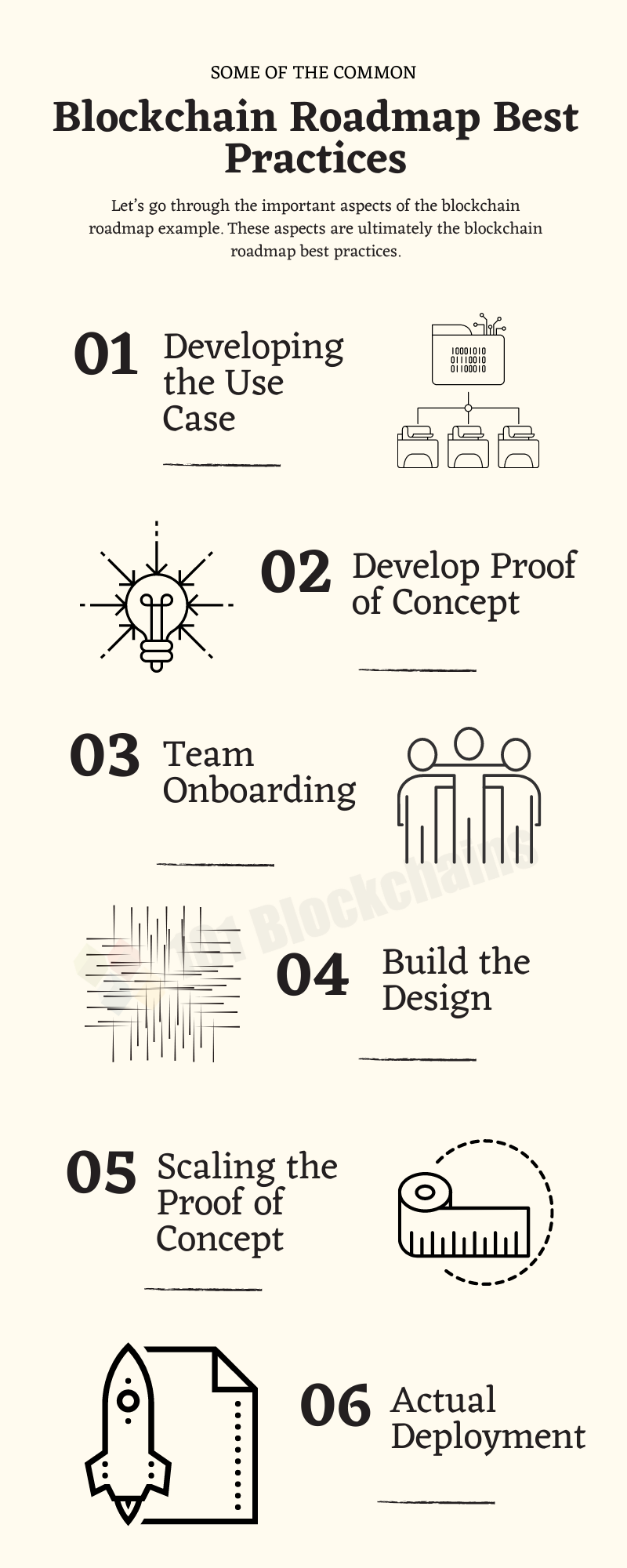
Please include attribution to 101blockchains.com with this graphic. <a href='https://101blockchains.com/blockchain-infographics/'> <img src='https://101blockchains.com/wp-content/uploads/2021/05/Blockchain-Roadmap-Best-Practices.png' alt='Blockchain Roadmap Best Practices='0' /> </a>
Now when you have gained the basic understanding of the need for a blockchain roadmap, let’s go through the important aspects of the blockchain roadmap example. These aspects are ultimately the blockchain roadmap best practices. Let’s get ahead.
1. Developing the Use Case
The first step in a blockchain roadmap example would point out the development of a use case. The use case should follow all the fitness factors carefully as they can help in determining the feasibility of blockchain for your use case. The notable fitness factors that you should follow according to blockchain roadmap best practices include the number of participants in the blockchain landscape. In addition, the accounting and regulatory compliance, real-time asset transfer, and exchanges alongside the complexity of business objectives can influence the roadmap.
Stages of Use Case Development
The use case development phase for finalizing use case starts with learning about the places where blockchain actually makes some sense for your business use case. The development of a blockchain use case involves four distinct steps.
The definition of the use case would then focus on the preparation of an inventory of different use cases for resolving business challenges. Subsequently, you have to focus on evaluating the extent to which different use cases can capitalize profitably on blockchain capabilities. With a detailed outline of all the use cases on the basis of a use case evaluation framework, it is possible to round up the best use case.
The use case evaluation framework relies on three prominent traits in a blockchain roadmap template. The three factors include viability, desirability, and feasibility, with each of them implying definitive significance for blockchain use cases. Viability points out the possibility of expected return with the use case, and feasibility refers to the ability for delivery. Subsequently, desirability refers to the alignment of the use case with the business objectives.
Want to know about blockchain changing the world? Check out our guide on how blockchain can change the world right now!
2. Develop Proof of Concept
The Proof of Concept comes as the next important step in a blockchain roadmap template as it provides an outline of the planned project. The definition of the use case sets the fundamental premise for the creation of a minimum viable product (MVP) and minimum viable ecosystem (MVE). MVP is one of the most commonly used terms related to agile development with respect to blockchain roadmap best practices.
An MVP basically outlines an overview of the project that you want to build with blockchain. On the other hand, you have to create the MVE by specifying the vendors you want to include on the blockchain. Apart from the selection of multiple vendors, you must also define the ground rules for authority involved with code maintenance. In addition, you should also identify best practices for code maintenance, addition, and removal of members, along with the division of cost.
3. Team Onboarding
Team onboarding is an important aspect of any blockchain roadmap example in building the proof of concept. The ideal blockchain project team could help in a smoother implementation process. For example, the Chief Strategy Officer, Chief Information Officer, subject matter experts, and business representatives are some of the important roles you have to include in your blockchain project team. The selection of the right stakeholders helps you move towards the next step of developing the proof-of-concept.
4. Build the Design
Blockchain roadmap best practices suggest the development of the functional and technical architecture for the proposed solution. In addition, the best practices for defining proof of concept in blockchain roadmap refer to a selection of blockchain stack technology. Furthermore, enterprises can work on the development and testing of a proof of concept with continuous iterations. Most important of all, introspection of the proof of concept is necessary for confirming the value and identifying new challenges.
5. Scaling the Proof of Concept
The progress of blockchain roadmap best practices to the next stage includes scaling of the proof of concept. First of all, scaling would involve the development of an operating model and governance to define the solution fundamentals. Subsequently, it also focuses on the expansion of the MVP idea through the creation of a new blockchain or joining existing consortiums.
Businesses should turn their attention towards the blockchain implementation roadmap for piloting blockchain solutions in live production environments. You have to move towards the next step in the scaling stage by designing a suitable roll-out strategy. Furthermore, businesses should also emphasize the integration of the rollout strategy with legacy systems.
6. Actual Deployment
After finalizing the rollout strategy, businesses should look for the industry relevance of the technology stack. This means that you have to apply the technology stack in relevant business technology use cases. In addition, the industrialization of the technology stack could also support the engagement of regulators according to industry requirements.
In the final step, you can work on developing a formal institutionalization of the operating structure for the desired blockchain solution. It is also important to look out for important success factors in selecting a blockchain consortium for building your project. The notable success factors associated with the success of blockchain consortium include membership, governance, leadership, and funding.
Start learning Blockchain with World’s first Blockchain Career Paths with quality resources tailored by industry experts Now!
Final Verdict
The important highlights in the blockchain roadmap best practices are clearly reflective of the simple approach in blockchain project implementation. It is important to take note of the scaling and commercialization of the MVP along with legal operating models. The discussion would focus on ownership rights, compliance, legal requirements, and governmental policies for getting the best of the blockchain roadmap.
Experts always recommend that understanding the true potential of blockchain can help you start preparing for developing a blockchain solution. Blockchain is something more than just a new way to facilitate secure and immutable transactions. Once you understand it carefully, you can start with blockchain project development!

